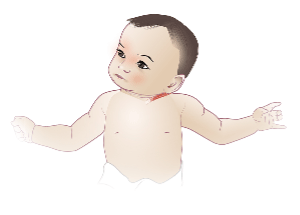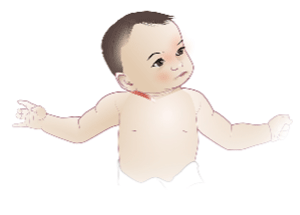Congenital Muscular Torticollis Clinical Pathway — Outpatient Specialty Care and Primary Care
Congenital Muscular Torticollis Clinical Pathway — Outpatient Specialty Care and Primary Care
Physical Exam Features of CMT
- Head tilt to ipsilateral side of tight sternocleidomastoid muscle (SCM)
- Restricted cervical range of motion (ROM)
- Restricted cervical rotation to ipsilateral side of head tilt or SCM tightness
- Restricted cervical lateral flexion to contralateral side of head tilt due to SCM tightness
- Preference for cervical rotation to one side
- Mass or thickening of sternocleidomastoid muscle (SCM)
- Plagiocephaly present (unilateral head flattening)
History and Physical Exam
- Types of torticollis that may be present
- Postural torticollis: postural preference of cervical spine with no muscle tightness or restriction to passive ROM
- Muscular torticollis: muscular tightness of SCM and limitations of ROM of cervical spine
- Sternomastoid tumor torticollis: muscular tightness and limitations of ROM of cervical spine as well as SCM thickening or fibrosis
- A restriction in cervical range of motion may cause significant functional impairment to gross motor development as well as visual awareness of surroundings
- Common etiology includes:
- Intrauterine compartment syndrome
- Birth trauma
- Hereditary factors
- Rupture of muscle
- Intrauterine malposition
- Deformational plagiocephaly
| General |
|
|---|---|
| Torticollis History |
|
| Head and Neck Exam |
|
|
|
|
|
|
|
|
|

|
|

|